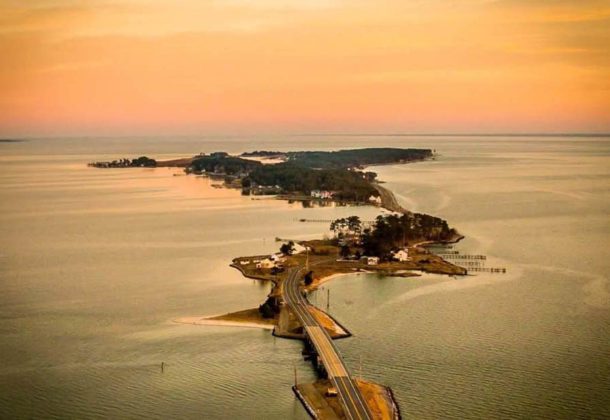The 1920s on St. George Island, MD

The excerpts below are from Who’s Who of St. George Island, by Mary Gale Adams, April 1994, St. George Island, MD.
Cap’n Jack Russell, a brother of Ms. Adams, explains, St. George Island is positioned 6 miles up the Potomac River from Point Lookout, MD, and traditionally home to some 200 families. Almost up to when these oral histories were compiled, in 1994, most families were supported by commercial fishermen and used boats for commerce and as avenues to travel around the Chesapeake Bay. — Jack Russell
The Nineteen Twenties
by Wendell J. Chesser
In February 1920, my father, Howard J. Chesser (1885-1955), bought the pungy J.S. Smith from Gus Rice at Lake Landing Wharf in Coan River, Virginia. The price was $700. We were about as proud as we could be with this new boat which came to be known to everyone as the Joe Smith.
The main oyster season was about over, but money could still be made running oyster plants. [Oyster “plants” are oysters too small to harvest for market, but can be harvested and sold to be “replanted” on private oyster bottom, that is bottom that is leased from the state-JR). In those days, March was oyster plant season, and St. George Creek and St. Mary’s River had an abundance of these oysters.
The many tongers were all catching plants during March. In one or two days, tongers in canoes could load the J.S. Smith to capacity, which was one thousand bushels. Oyster plants were taken to the Great Wicomico River in Virginia and sold to owners of oyster bottom. Papa purchased them for twenty-five cents per bushel freight.
By the end of March, we had made four round trips, and our gross profit was more than $600. On two of these trips we carried an extra crew member. My step-grandfather, John R. “John Dick” Moore, made one trip, and the outstanding hotel cook, Joe Ed Jones, made the other. On the other two trips there was just Papa and me. Papa was proud of his accomplishments during the first month of ownership, and he spoke of it often.
In 1920, I was 12 years old, and weighed little more than a hundred pounds. The work was heavy, but I was able to do it because Papa taught me early how to use my weight to its best advantage. He also taught me many other things that helped me survive in the future. More than anything else Papa emphasized responsibility, and I was no exception.
I was through with schooling, but that was all right with me, for I didn’t like school. Like most of my peers, I was required to work to survive; but as I think back about those years, I realize that my mind and body were not ready to do a man’s work.
The next four years were very hard on me, and if I dwell on it too much, I want to cry. There were pleasures but overall the years were not good. Early teenage years are difficult under the best circumstances. A teenage boy, required to do a man’s work, carries two burdens.
For eight long years, an eternity to me, I was on the Joe Smith each time she sailed. We depended on oysters as our major source of income for the year. As it is now, the oyster season was September through March. October through December were the busiest months. March, the plant month, was also busy
Cold and freezing weather usually limited oyster business in January and February. April and May were fish months, and hundreds of deep water pound nets were placed in the lower Potomac River and Chesapeake Bay. There were many fish factories, mostly in the Virginia rivers. This was a large activity in the Twenties.
For more of Mr. Chesser’s remembrances, including the “pure drudgery [of loading] bags of [oyster shell] lime weigh[ing] 200 pounds … hoisted from the hold by hand” sign up to receive an e-mail notification of the next Message From the Cap’n posting by Cap’n Jack, who will get back to Cap’n Chesser’s tales sooner or later.
The Lexington Park Leader brings tales from local history, SlackWater stories, and Message From the Cap’n as a compilation of important information we might need. We hope you enjoy them. We encourage you to use the comment section or email [email protected] to fill in missing details, or correct inaccurate ones.
To learn about the lore, as well as tours and trips involving the Chesapeake, get more information on Fins + Claws’ Leader Member Page.
Or contact Cap’n Jack Russell at the email address above or 240-434-1385.























Thanks Jackie….Love all this info….was wondering if you know of any pictures of Tracy Gardiners farm in the 50s and 60s….Carthagena.
Thanks Woody
Cap’n Jack— I do want to hear more of this story Pleasebsharf more from Wendell soon. Thanks.
Thanks Jack love the history
Great stuff Jack. I’m interested in learning as much about the island as I can. Marlene and I will be moving down full time in the spring.